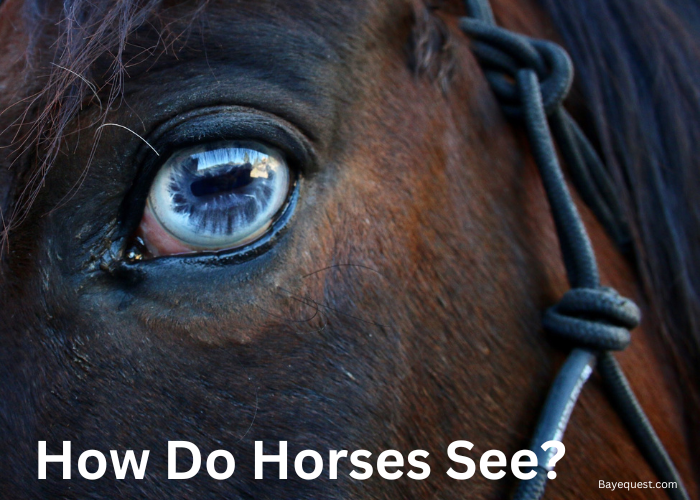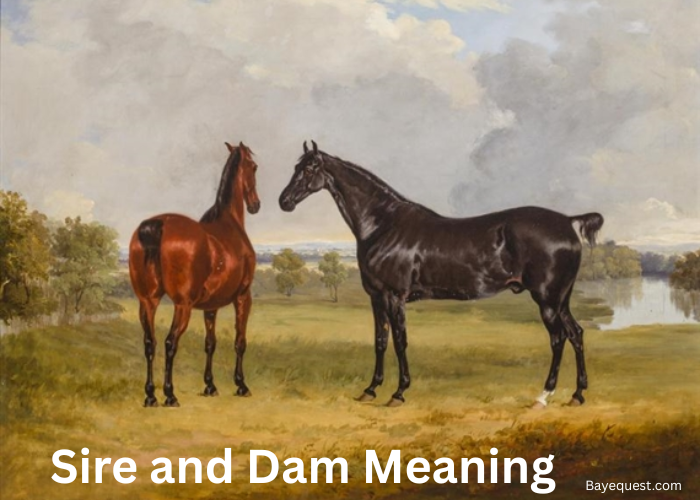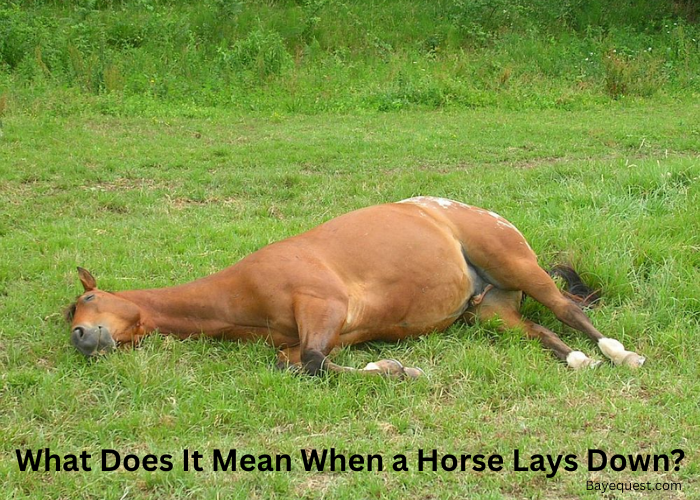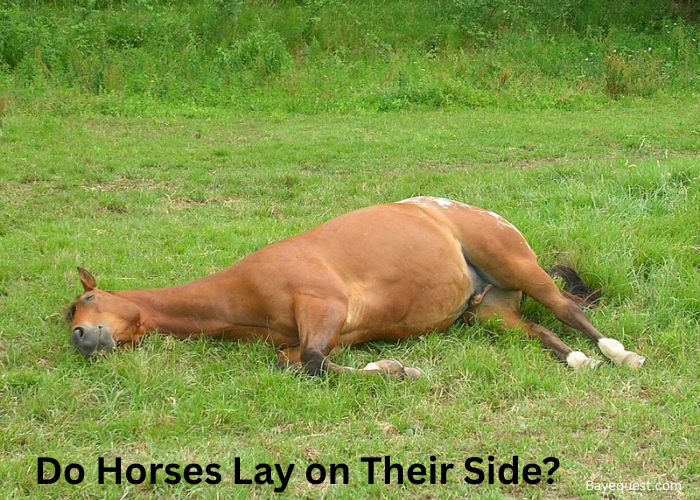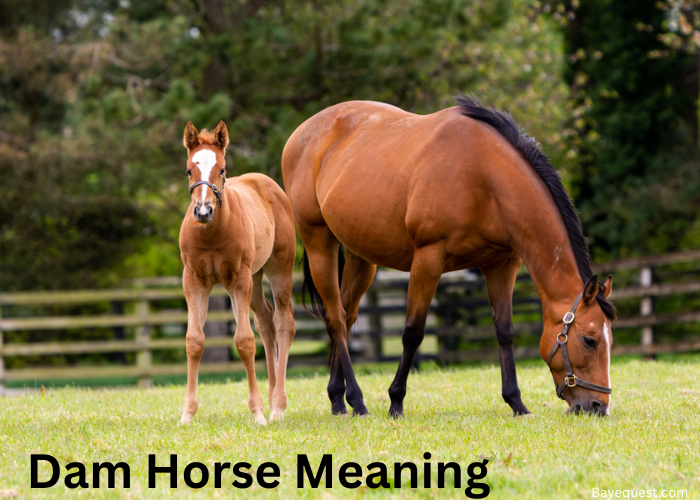Horses see the world differently from us. Their eyes are on the sides of their heads, giving them a wide view.
They can spot danger quickly and react fast. But what do they really see? How do they see color, depth, and movement?
Knowing how horses see helps us train them better and keep them calm in new places. It also helps us understand their behavior.
Let’s take a closer look at how horses see and why it’s important.
How Do Horses See? Key Takeaway
Horses have about 200-210-degree vision due to their eye placement. They see blues and greens but have difficulty with red. Horses use monocular vision to view wide areas and binocular vision to focus on objects ahead. Their night vision is strong, thanks to large pupils and a reflective layer called the tapetum lucidum.
Basic Structure of a Horse’s Eye
The horse’s eye is one of the largest of any land animal. It is positioned on the sides of its head, giving the horse a wide field of vision.
The outer layer, called the cornea, is clear and helps focus light into the eye. Behind the cornea is the pupil, which adjusts to let in more or less light.
The lens sits just behind the pupil and focuses light onto the retina. The retina, located at the back of the eye, contains cells that detect light and send signals to the brain for processing.
This structure allows horses to see well in both bright and dim conditions.
How Horses See
Horses see the world differently from humans.
Their eyes are positioned on the sides of their heads, giving them a nearly 350-degree field of vision. This allows them to see almost everything around them without turning their heads.
However, horses have two blind spots: one directly in front of their noses and one directly behind them.
Horses use both monocular and binocular vision. Monocular vision means they can see different things with each eye, giving them a wide range of sight.
Binocular vision occurs when they focus on an object using both eyes, usually when something is directly in front of them.
This helps them judge depth and distance, but their depth perception isn’t as strong as humans.
Horses see some colors but not all. They are dichromatic, meaning they see blue and green but not red. What looks bright to us might appear duller to a horse.
Their night vision is better than ours. Horses have a large pupil and a special layer in the back of their eyes called the tapetum lucidum.
This layer reflects light, allowing horses to see better in low light. However, it takes them longer to adjust between light and dark conditions.
Movement is extremely important to how horses see. They are highly sensitive to motion, especially in their peripheral vision.
This helps them detect threats quickly. Overall, horses have strong vision suited to their needs as prey animals.
Do Horses See Color?
Yes, horses can see color, but not in the same way humans do. Horses are dichromatic, meaning they have two types of color receptors, or cones, in their eyes.
These cones allow them to see some colors, mainly blue and green. However, horses cannot distinguish between red and other colors, as they lack the cone for red light.
To a horse, red may appear as a shade of brown or gray.
While humans can see a full range of colors, horses experience a more limited spectrum, somewhat like color-blindness in humans.
Despite this, their color vision is still useful in detecting contrasts and distinguishing objects in their environment.
What Might Colors Look Like to Horses?
To horses, colors look different than they do to humans. Since they are dichromatic, horses mainly see blues and greens.
Blue appears clearly to them, while green is likely less vibrant. Red, however, is not visible to horses as it is to us.
Instead, red may look like a shade of brown, gray, or dark yellow. Yellow might appear as a lighter color, similar to green but less bright.
Overall, horses see a more muted world, where colors like blue and green stand out, while reds and other shades are perceived as duller or grayish.
Do Horses See at Night?
Yes, horses can see at night, and their night vision is quite good. Their eyes have large pupils, allowing more light to enter, which helps them see in low-light conditions.
Additionally, horses have a special layer at the back of their eyes called the tapetum lucidum. This layer reflects light, enhancing their ability to see in the dark.
While their night vision isn’t as sharp as their daytime vision, horses can navigate and recognize their surroundings well in dim light.
However, it takes them longer to adjust when moving between bright and dark environments.
12 Amazing Facts About Equine Vision
1. Horses have a nearly 350-degree field of vision due to the placement of their eyes on the sides of their heads.
2. Despite their wide view, horses have blind spots directly in front of their noses and behind their tails.
3. Horses can see different things with each eye (monocular), but when focusing on an object in front of them, they use both eyes (binocular) for better depth perception.
4. Horses see mainly blues and greens but cannot distinguish red, seeing it as shades of brown or gray.
5. Horses are highly sensitive to movement, especially in their peripheral vision, helping them detect potential predators.
6. Thanks to large pupils and the tapetum lucidum, horses can see well in low-light conditions, making their night vision better than humans’.
7. Horses struggle to see objects that are very close to them. They often rely on touch to explore things up close.
8. Horses take longer to adjust their vision when moving between bright light and darkness, more so than humans.
9. Horses are good at seeing distant objects, which is crucial for spotting danger from far away.
10. Horses’ vision influences their reactions, such as spooking easily at sudden movements or unfamiliar objects in their blind spots.
11. Horses have the largest eyes among land mammals, contributing to their wide vision and ability to see in various lighting conditions.
12. As prey animals, their vision is adapted for detecting threats, with quick responses to movement and wide-angle sight to spot predators.
Horse Vision Vs Human Vision
| Aspect | Horse Vision | Human Vision |
| Field of view | Nearly 350 degrees | Approximately 180 degrees |
| Blind spots | In front of the nose and behind the tail | None directly in front or behind |
| Color perception | Dichromatic (sees blues and greens) | Trichromatic (sees red, green, and blue) |
| Night vision | Good, thanks to large pupils and tapetum lucidum | Weaker night vision, no tapetum lucidum |
| Depth perception | Weaker than humans, uses monocular and binocular vision | Strong, due to consistent binocular vision |
| Sensitivity to movement | Very sensitive, especially in peripheral vision | Less sensitive than horses |
| Close up vision | Poor, relies on touch for nearby objects | Good, can focus on nearby objects easily |
| Pupil size | Large, allows more light in | Smaller, less light intake |
| Light adjustment | Slower adjustment between light and dark | Faster adjustment to changes in hlight |
| Vision type | Monocular and Binocular | Primarily Binocular |
How Does a Horse See? FAQs
Can horses have blue eyes?
Yes, some horses have blue eyes. This trait is most commonly seen in horses with lighter coat colors, such as Paints, Appaloosas, and certain breeds with a pinto pattern. Blue eyes in horses are generally due to a lack of pigment in the iris.
Why are horses eyes covered?
Horses’ eyes are often covered with fly masks or blinders. Fly masks protect their eyes from insects, dust, and debris, preventing irritation. Blinders, on the other hand, are used during driving or racing to restrict the horse’s peripheral vision. This helps them stay focused and prevents distractions. (Find out other reasons why horse eyes are covered in our other guide.)
How do horses see humans?
Horses see humans with wide peripheral vision due to their side-placed eyes. They perceive movement, shapes, and contrasts better than fine details. Horses see in shades of blue and green but struggle with red. They rely on body language, recognizing emotions and familiar people through vision, hearing, and smell.
How Horse See: Conclusion
Understanding how horses see gives us a better way to connect with them.
Their wide field of vision, strong sensitivity to movement, and ability to see in the dark help them survive.
While they don’t see colors like we do, their vision suits their needs.
Knowing their blind spots and how they see the world helps us handle them with more care and patience.
Whether you’re training, riding, or just spending time with a horse, keeping their unique vision in mind can make a big difference in building trust and reducing stress.




